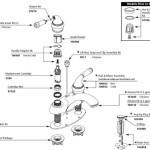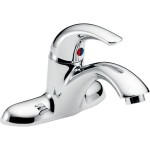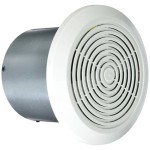Bathroom Exhaust Fan Venting Options
Ensuring proper ventilation in your bathroom is crucial for maintaining a healthy and comfortable space. A bathroom exhaust fan is an essential component of this ventilation system, as it helps to remove moisture, odors, and pollutants from the air.
When choosing a bathroom exhaust fan, it's important to consider the available venting options. The two main types of venting are ducted and non-ducted.
Ducted Venting
Ducted venting involves connecting the exhaust fan to a duct that leads outside your home. This type of venting is more effective at removing moisture and odors, as it allows the fan to exhaust air directly to the outdoors.
However, ducted venting can be more expensive and complex to install, especially if you have an existing home without existing ductwork. It may also require professional assistance.
Non-Ducted Venting
Non-ducted venting, also known as recirculating venting, involves filtering the air within the bathroom and returning it to the room. This type of venting is less effective at removing moisture and odors, but it is easier and more affordable to install.
Non-ducted exhaust fans typically feature charcoal filters that absorb odors and pollutants. These filters need to be replaced periodically to maintain proper ventilation.
Choosing the Right Venting Option
The best venting option for your bathroom depends on your specific needs and circumstances. Here are some factors to consider:
- Bathroom size: Larger bathrooms require more powerful exhaust fans with higher CFM (cubic feet per minute) ratings.
- Moisture levels: Bathrooms with higher moisture levels, such as those with showers or bathtubs, require more effective ventilation.
- Existing ductwork: If you have existing ductwork, ducted venting is a more logical choice.
- Budget: Ducted venting is typically more expensive than non-ducted venting.
Additional Considerations
In addition to choosing the right venting option, there are a few other important considerations when installing a bathroom exhaust fan:
- Fan Placement: The fan should be installed directly over the shower or bathtub to maximize its effectiveness.
- CFM Rating: Choose a fan with a CFM rating that is appropriate for the size of your bathroom.
- Noise Level: Consider the noise level of the fan when selecting a model.
- Maintenance: Regularly clean the fan and replace the filter (if applicable) to ensure optimal performance.
Conclusion
Installing a bathroom exhaust fan with the appropriate venting option is essential for maintaining a healthy and comfortable bathroom environment. By considering the factors discussed above, you can select the right fan and venting system to meet your specific needs.

Venting A Bath Fan In Cold Climate Fine Homebuilding

Invisible Ventilation For A Better Bath Fine Homebuilding

Bathroom Fan Venting Tips Gui

Bathroom Exhaust Fans Building America Solution Center

Bathroom Exhaust Fan Gfci Vent Protection Requirements Checkthishouse

Bathroom Vents Lambro Industries

Installing A Bathroom Fan Fine Homebuilding

Bathroom Exhaust Fans The Complete Guide By Fanco

How To Install A Bathroom Roof Vent Family Handyman

4 Best Bathroom Exhaust Fan Venting Options
See Also







